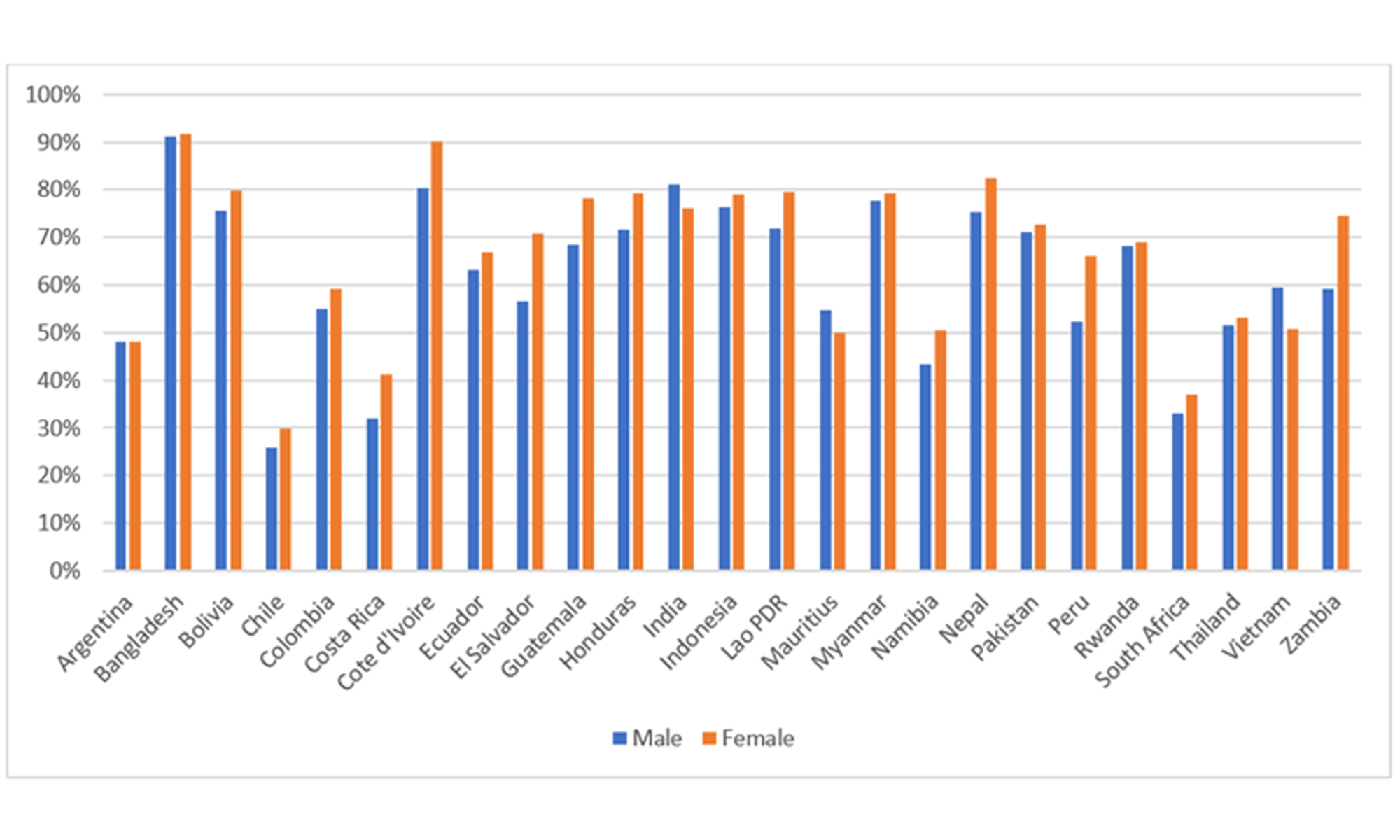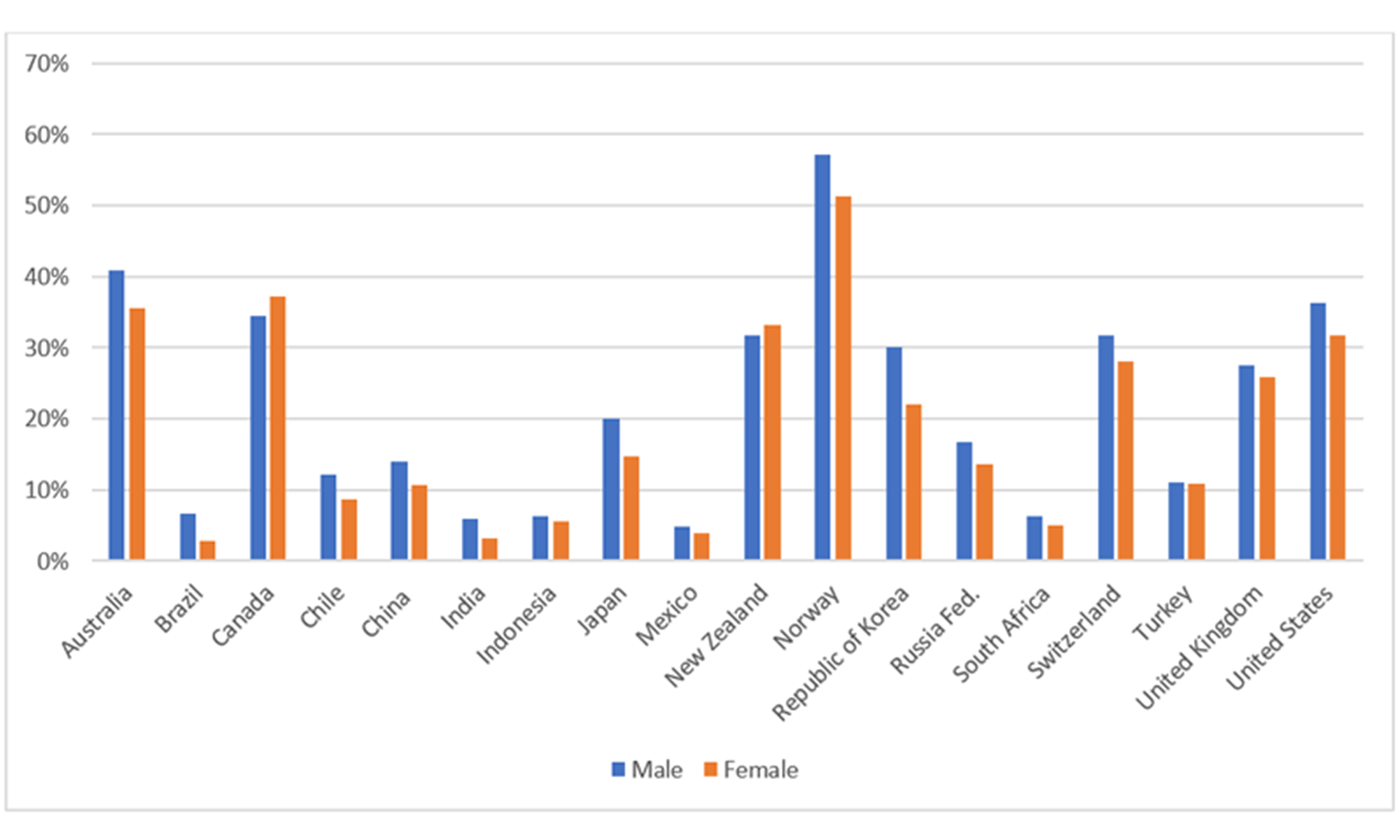The impact of the COVID-19 pandemic is not gender neutral, as it affects men and women differently. Therefore, we must not be gender blind in our responses to the pandemic, or else women will carry a disproportionately higher economic cost than men.
Globally, women are more vulnerable to economic shocks wrought by crises such as the coronavirus pandemic.
Why are women so at risk?
Firstly, women are more likely to lose their jobs than men. In many countries, women’s participation in the labour market is often in the form of temporary employment.
Across the world, women represent less than 40% of total employment but make up 57% of those working on a part-time basis, according to the International Labor Organization.
As the effects of the COVID-19 pandemic roll through economies, reducing employment opportunities and triggering layoffs, temporary workers, the majority of whom are women, are expected to bear the heaviest brunt of job losses.
Part time employment (as % of total employment)

Source: ILOStat. Part time employment refers to regular employment in which working time is substantially less than normal.
Safety nets not wide enough
Many women will not be rescued by social safety nets. as access to safety nets frequently depends upon a formal participation in the labour force.
But since women tend to work without clear terms of employment, they often are not entitled to reliable social protection such as health insurance, paid sick and maternity leave, pensions and unemployment benefits.
In many developing countries, women are either self-employed or work as contributing family workers, for example in family farms.
In South Asia, over 80% of women in non-agricultural jobs are in informal employment; in sub-Saharan Africa this figure is 74%; and in Latin America and the Caribbean, 54%of women in non-agricultural jobs participate in informal employment.
Service sector reeling under restrictions
The service sector is being hit hard by the restrictions imposed to manage the spread of the coronavirus.
Given that some 55% of women are employed in the service sector (in comparison with 44% of men), women are more likely to be adversely affected.
Moreover, female-dominated service sectors such as food, hospitality and tourism are among those expected to feel the harshest economic effects of the measures to contain the spread of the pandemic.
Limited access to credit
Women entrepreneurs are often discriminated against when attempting to access credit. This will be a challenge as credit will be of paramount importance in the survival of firms.
Without open and favourable lines of credit, many female entrepreneurs will be forced to close their businesses.

Source: ILOStat – Percentage of respondents who report borrowing any money in the previous 12 months (by themselves or together with someone else) to start, operate, or expand a farm or business (% age 15+).
More work, no pay
Women’s unpaid work is set to increase. Women remain responsible for the lion’s share of domestic chores and care work.
Measures to contain the pandemic such as quarantines and closures of schools imply additional household work and responsibility.
Some women may be forced to make difficult decisions to leave the labour market or opt for part-time jobs, as juggling between caring for family members and paid work becomes untenable.
Safeguard gender progress
As governments take steps to address the economic and social effects of COVID-19, they should not let it reverse the gender equality progress achieved in recent decades.
To avoid this, we must retain women’s productive participation in the labour force. Something we did not do in the aftermath of the 2008 global financial crisis. Here support measures were provided to large infrastructure projects that mainly employed men, while jobs were cut in teaching, nursing and in public services, all female-intensive sectors.
Support measures in response to COVID-19 should go beyond workers who hold formal employment and include informal, part-time and seasonal workers, most of whom are women.
This is particularly necessary in female-dominated spheres such as the hospitality, food and tourism sectors, now at a standstill due to confinement measures by governments.
Some countries are already moving in this direction. For example, Italy is considering putting into place support measures to cover informal and temporary workers once their contracts are over.
Government bailouts and support measures should not only prop up large and medium-sized enterprises, but also micro- and small businesses, where women entrepreneurs are relatively more represented.
In addition, private sector financial support and access to credit should be equally available to women and men.
More transparency and a simplification of public procurement processes would also help women’s businesses to benefit from increased government support.
The reallocation of public funds should avoid any possible increase in the burden of women as principal suppliers of unpaid work.
Create a gender-equal future
The coronavirus pandemic presents us with an opportunity to effect systemic changes that could protect women from bearing the heaviest brunt of shocks like these in the future.
Improved education and training opportunities for women would facilitate the shift from precarious jobs to more stable and better-protected employment.
Gender-responsive trade policies would open new opportunities to women as employees and entrepreneurs.
Broader provision of social services would lift women’s care burden and give them more time for paid jobs and leisure.
Flexible work arrangements, currently in place in response to the pandemic, should continue beyond it and provide a new model of shared responsibilities within households.
Our ability to bounce back from this crisis is dependent on how we include everyone equally. If more women take part in shaping a new social and economic order, chances are that it will be more responsive to everyone’s needs and make us all more resilient to future shocks.

